Through hardship to the stars. Aristarkh Apollonovich Belopolsky
Aristarkh Apollonovich was born 13 July 1854, in Moscow. He had two brothers: Alexander and Olympus. About his father, the future astronomer wrote in his memoirs as follows: “Father of Serbian descent. One of his ancestors moved from Belopolye to Russia. By lack of funds, the father of the university did not graduate, he entered the service as a warden for incoming students at the second gymnasium. ” The mother of the future astronomer had a conservatory education and, according to her contemporaries, was an excellent pianist.
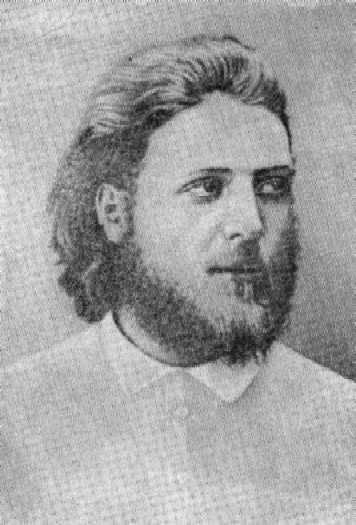 The Belopolskie lived poorly, but the parents of Aristarkh were very intelligent people, had extensive scientific and social ties. Such famous personalities as Alexey Petunnikov and Nikolai Kaufman, famous Russian botanists, often visited their house. In addition, Apollon Belopolsky was well acquainted with the entrepreneur-philanthropist Savva Mamontov and the artist Ilya Repin. The teachers of the Second Moscow Gymnasium, of whom Sheremetevsky, Shuf and Kondakov stood out, came to his friendly meetings. Also in the house of the Belopolsky musicians often gathered, quartets and trios were arranged. Aristarkh's mother played a lot herself, the children attended numerous concerts with her, listened to all the famous singers and musicians of that time. Love for serious music has become one of the specific features of the personality of Aristarkh Apollonovich.
The Belopolskie lived poorly, but the parents of Aristarkh were very intelligent people, had extensive scientific and social ties. Such famous personalities as Alexey Petunnikov and Nikolai Kaufman, famous Russian botanists, often visited their house. In addition, Apollon Belopolsky was well acquainted with the entrepreneur-philanthropist Savva Mamontov and the artist Ilya Repin. The teachers of the Second Moscow Gymnasium, of whom Sheremetevsky, Shuf and Kondakov stood out, came to his friendly meetings. Also in the house of the Belopolsky musicians often gathered, quartets and trios were arranged. Aristarkh's mother played a lot herself, the children attended numerous concerts with her, listened to all the famous singers and musicians of that time. Love for serious music has become one of the specific features of the personality of Aristarkh Apollonovich.Belopolsky had its own house on Gorokhovaya Street, and around it there was a garden and a vegetable garden, in which the children organized a lot of interesting entertainment - they built huts, dug holes in search of treasures and water, made trolleys, stilts, sledges. Parents encouraged crafts, buying various tools for children. Becoming older, the guys became interested in classes in chemistry and physics. The brothers themselves produced Leyden jars, electrophores, produced hydrogen and oxygen. With the assistance of Kaufman, Aristarchus and Olympus collected several aquariums and terrariums, populating them with lizards, frogs, and snakes. In addition, they tried to train sparrows, white mice and ravens. Aristarkh at one time was very passionate about steam engines, even built a small model of a locomotive.
It is worth noting another feature of raising children in the Belopolsky family. Influenced by his uncle, the doctor of medicine, Aristarch Apollonovich’s father taught children to sleep indoors with windows in the summer and in the winter. In winter, of course, under fur blankets. The rule was not canceled even if the children were sick. If one of the children was sick, but he could move and walk, then the father forced the patient to do some housework. Aristarkh Apollonovich recalled that he suffered typhoid while staying in the same room with the windows open: "He ate only what the instinct suggested, no one in the family ever took any medication."
At this initial stage in the life of Aristarkh Apollonovich, he had no trace of astronomy. On the contrary, since the boy showed remarkable abilities for manual work, his parents wanted to send him to study abroad in some technical institution. However, the future scientist himself asked them to allow him to study in Russia.
At eleven years (in 1865 year) Belopolsky entered the second metropolitan gymnasium, where his father worked. He wrote about his years of study: “I did quite well until the sixth grade, although I didn’t spend much time preparing lessons. From the second year of stay began to rehearse with poorly performing students. However, he failed in the final exam and was left in the newly introduced eighth grade. ”
After graduating from high school, Aristarkh Apollonovich decided to get a job at the factory. However, the father was totally against it. Having succumbed to his requests, Belopolsky entered the Faculty of Physics and Mathematics of Moscow University in 1873 year. His mentors there were famous personalities: mathematician and mechanic Augustus Davidov, the founder of domestic geophysics Fedor Sludsky, astronomer Fedor Bredikhin, and the physicist Alexander Stoletov, who was at that time in the heyday of his pedagogical talent. The future astronomer wrote: “As in the gymnasium, I studied at the university for free, except for the first year, for which I contributed the money I got from my lessons in the gymnasium”.
During the holidays after the second year Aristarkh Apollonovich, following his attraction to mechanics, decided to work in a workshop engaged in the repair of locomotives of the Yaroslavl Railway. In the locomotive depot, he worked as a simple worker for three months, and then returned to the university.
By the end of the training, Belopolsky was notably distinguished from other students by his knowledge in the field of mechanics. However, chance helped Aristarkh Apollonovich to find his true vocation. In 1877, the Moscow Observatory staff consisted of only three people - the director Bredikhin, supernumerary assistant Tserasky and astronomer-observer Gromadzsky. Just at that time Professor Fedor Bredikhin introduced new - astrophysical - research methods. The help of an experienced mechanic was needed, which was not among the members of the observatory. At one of the lectures, Fyodor Alexandrovich addressed the students with a request to help him. Belopolsky, always ready to apply his technical abilities, immediately agreed. He began to regularly come to the observatory on Presnya, to assist in the scientific work carried out there, and soon he became seriously interested in astronomy.
After graduating from university in the 1877 year, Belopolsky was left at the department of astronomy as his leader, Fyodor Bredikhin, with the aim of future preparation for the title of professor. And in 1879, the Cerasky Observatory Assistant was forced to go on a long vacation due to exacerbation of tuberculosis. It was necessary to urgently find a person able to continue his work, namely the systematic photographing of the Sun. Aristarkh Apollonovich, having completed an accelerated astrophotography course, enthusiastically set to work: “The director of an astronomical observatory suggested that I take a photo of the solar surface using a photoheliograph. I had some experience in photography and readily accepted his offer. That's how I accidentally became an astronomer. ”
The environment that Aristarkh Apollonovich got into at the end of the university had a tremendous impact on him, awakening his dormant abilities. At that time, the Moscow Observatory was an advanced astronomical institution, armed with the most modern instruments. Talented, progressive-minded young people grouped around charming Fedor Alexandrovich. At the weekly family evenings in the Bredikhins' house, Belopolsky had to take part in the discussion of various social and scientific problems. These conversations made so strong an impression on young astronomers that, having left the Bredikhins, as a rule, they immediately gathered from someone else to continue their consideration of the questions raised.
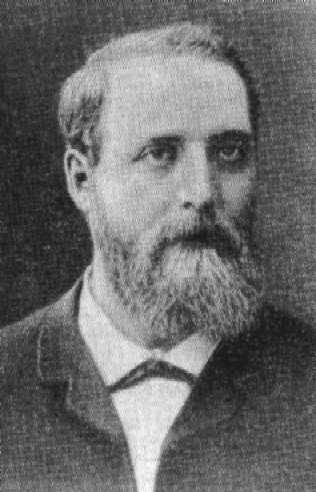 In the Moscow Observatory Aristarkh Apollonovich spent eleven years. During this time, the young employee has mastered the work of all available instruments and tools. He worked on comets, planets and stars on the meridian circle, studied the planets with the help of a Merz refractor. However, his main occupation was still photographing the sun. During the period from 1878 to 1885, Belopolsky collected a huge amount of material regarding the areas and position of sunspots, becoming an experienced master in the field of photographic technology. He was the first in Russia (in the 1883 year) to perform direct photographing of stars. The bromide-silver plates in those years were not yet, and the astronomer had to independently produce a photographic emulsion. He also tried using photographs to determine the radius of the Sun, improved the techniques of photographing through small holes without optics. October 4 1884, Belopolsky managed to photograph a lunar eclipse. Among others, Aristarkh Apollonovich took part in an expedition to the city of Yuryevets (Kostroma province) to observe a total solar eclipse, which took place on August 19 1887. And although the observation conditions were not favorable, the astronomer managed to get the world's first photographs of the solar corona.
In the Moscow Observatory Aristarkh Apollonovich spent eleven years. During this time, the young employee has mastered the work of all available instruments and tools. He worked on comets, planets and stars on the meridian circle, studied the planets with the help of a Merz refractor. However, his main occupation was still photographing the sun. During the period from 1878 to 1885, Belopolsky collected a huge amount of material regarding the areas and position of sunspots, becoming an experienced master in the field of photographic technology. He was the first in Russia (in the 1883 year) to perform direct photographing of stars. The bromide-silver plates in those years were not yet, and the astronomer had to independently produce a photographic emulsion. He also tried using photographs to determine the radius of the Sun, improved the techniques of photographing through small holes without optics. October 4 1884, Belopolsky managed to photograph a lunar eclipse. Among others, Aristarkh Apollonovich took part in an expedition to the city of Yuryevets (Kostroma province) to observe a total solar eclipse, which took place on August 19 1887. And although the observation conditions were not favorable, the astronomer managed to get the world's first photographs of the solar corona.In the same year 1887, Aristarkh Apollonovich married. Maria Fedorovna Vyshinskaya, a professional musician who graduated from the Moscow Philharmonic School, became his chosen one. Subsequently, they had three children. The eldest daughter Raisa followed in the footsteps of her mother, she died during the Second World War. The second daughter, Zoe, on the contrary, chose her father's path, becoming a famous astronomer and having worked all her life in the astrometry department at Pulkovo. The younger son, Mark, became a specialist in the field of chemistry.
During the years of stay in the Moscow Observatory, Belopolsky has accumulated quite extensive material, mainly regarding the Sun. The young astronomer did a long and painstaking work, measuring and processing all the images he received, and deriving his own tables of the motion of matter on the surface of the Sun at different latitudes. His thoughts on the patterns of motion of solar matter were outlined in his master’s thesis in 1887. The Council of Moscow University, having studied the presented works, awarded him the degree of Master of Astronomy.
By the way, Belopolsky did not limit himself to just the theoretical side and deepened the research experimentally. The experiment invented by him included a glass cylinder filled with water, having a coordinate grid and stearin dust particles placed in water and perfectly visible from the outside. The centrifuge spun the balloon, which soon stopped. But the fluid inside, moving the particles, continued to move for some time. Belopolsky, noting the passage of dust particles through the marks of the grid, found that the movement of fluid in both hemispheres is symmetrical and increases from the poles to the equator, recalling the phenomena he had seen on the Sun.
With these experiments was connected another work of a young astronomer, dedicated to the rotation of Jupiter. The largest planet of our solar system has always been a favorite object of astronomers, because it allowed itself to be seen even through a small tube with a forty-fold increase. And, nevertheless, there was no consensus regarding the exact period of rotation of this planet. Aristarkh Apollonovich carefully analyzed all collected over two hundred years of observation and came to the conclusion that Jupiter is characterized by two periods - in 9 hours 50 minutes, referring to places bounded by equatorial, dark bands, and in 9 hours 55 minutes, relating to the rest of the surface. As it turned out later, this feature is observed in all major planets of our system.
By the middle of the 1880s, Belopolsky was already well known in the country as an astronomer and master of scientific photography. He managed to publish over thirty scientific articles, more than half of which were translated into foreign languages. Therefore, it is not surprising that in 1888, Otto Struve personally invited him to work at the main observatory in Russia, Pulkovo, with which the entire future life of the great scientist was inextricably linked. The Pulkovo Observatory had more capabilities than the Moscow Observatory, but the entire line of activity of its employees, like all scientific equipment, was aimed at solving “classical” problems of accurately determining the positions of the stars. Aristarkh Apollonovich took the position of associate astronomer and took up work on astrometry, processing the materials obtained on the transit instrument. However, this area of astronomy was uninteresting to him, Belopolsky was always attached to astrophysics alone. The situation changed after the appointment in 1890 of the director of the Pulkovo Observatory of his old mentor and friend Fedor Bredikhin. The ensuing change of leadership marked a new stage in the activities of this institution, which assigned a separate role to the new - astrophysical direction while preserving traditional astrometric and astronomical works.
At the suggestion of the new director, Belopolsky occupied an independent position in astrophysics, and the newly formed department of the same name was transferred to his management. First of all, Aristarkh Apollonovich set about creating a powerful instrumental base at Pulkovo. In 1891, he traveled to Potsdam, which at that time was the world center for astrophysics, where he ordered a large 13-inch astrograph mounted at the observatory for the 1893 year. During this trip, he also acquired a stellar spectrograph, which he later had to independently adapt to the telescopes already available in Pulkovo, designed for visual observations.
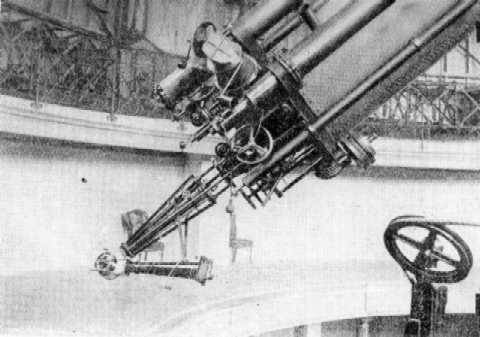
Pulkovo normal astrograph with prism spectrograph A. A. Belopolsky
Initially, the scientific interests of Belopolsky did not differ from the hobbies of the Moscow period. He personally measured five hundred photographs of the Sun, made by Swede Hasselberg from 1881 to 1883. The results were published as a separate monograph. Also Aristarkh Apollonovich observed solar protuberances, and in 1892 for the first time he proposed a method for calculating the period of rotation of the Sun by torches - bright clouds, observed, as a rule, near the solar edge.
After some time, the scientist was the first in our country to start work in a completely new field - astrospectroscopy, based on the Doppler-Fizeau principle. It lies in the fact that light coming from a star and decomposed by a prism into a multicolored spectrum can be a source of information both about the physical properties of the star and about its movement along the line of sight, that is, along the direction in which it is observed. Experimental proof of this principle was extremely difficult. In order to catch the movement of lines in the spectrum of a light source in accordance with the Doppler-Fizeau principle, it was necessary for the source to move at a speed of several hundred meters per second. Aristarkh Apollonovich spent a long time thinking about this issue and, finally, he found a simple and elegant solution. Here, more than ever, Belopolsky’s miraculous ability to invent and design was manifested. The main part of the device became several rapidly rotating mirrors mounted on the wheel rims and moving towards each other. The light reflected from them from a stationary source, they reported speeds close to the cosmic. Ultimately, the reflected light fell into the spectrograph, where it expanded into a spectrum. The reflection of the light beam from the moving mirrors gave the same effect as if the light source itself was moving.
The scheme of the device was compiled by an astronomer by the year 1894. Reports on the possibility of conducting an experiment to test the Doppler-Fizeau principle were published by Belopolsky in the German journal Astronomische Nachrichten and in the works of the Italian Society of Spectroscopists. Already some time later, Aristarkh Apollonovich received the much-needed financial support from the American Elizabeth Thomson Science Foundation. Using the capabilities of the workshops of the Pulkovo Observatory, by the spring of 1900, he had completed the construction of his installation, making it possible to empirically test the correctness of the law on which all modern astrospectroscopy is based. This remarkable experience attracted the attention of not only scientists and astronomers, but also the general public. The results of Belopolsky were written in many print publications of the time, and private companies offered him help to continue the work.
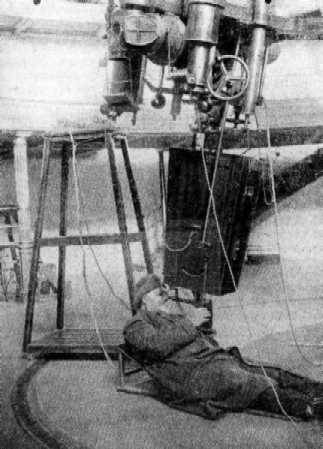 The first application of a spectrograph purchased abroad to stars was made by Aristarkh Apollonovich in the 1892 year. Initially, the instrument was mounted on an 15-inch refractor. However, in the future, Belopolsky was eager to adapt the spectrograph to the 30-inch refractor. The visual lens of the instrument, not intended for photographing, strongly interfered with it, giving images of disgusting quality. But soon the astronomer managed to find a way out. He independently calculated the correction lens and installed it in the tube, and also set up the spectrograph optics accordingly. As a result, quite clear images of the spectra were obtained.
The first application of a spectrograph purchased abroad to stars was made by Aristarkh Apollonovich in the 1892 year. Initially, the instrument was mounted on an 15-inch refractor. However, in the future, Belopolsky was eager to adapt the spectrograph to the 30-inch refractor. The visual lens of the instrument, not intended for photographing, strongly interfered with it, giving images of disgusting quality. But soon the astronomer managed to find a way out. He independently calculated the correction lens and installed it in the tube, and also set up the spectrograph optics accordingly. As a result, quite clear images of the spectra were obtained.Systematic spectrographic studies on the 30-inch refractor Belopolsky began to perform with the 1893 year and continued to do for 34 years. With this powerful tool, he made many of the most valuable observations that brought him worldwide fame as an outstanding spectroscopist. The first object for his studies was the New Star in the constellation Auriga, which, like all New, showed very rapid changes in the spectrum, as if going through the stellar evolutionary stages at an accelerated pace. The second object chosen by Belopolsky was the Lyra star, which has a double period of change in brightness. This was followed by studies of individual stars in the constellations of Cepheus, Eagle, Cygnus, Gemini, Lyra, Virgo, Taurus, Leo, Pegasus, Aurigae, Perseus, Bootes, Hounds of Dogs, Dragon, Cassiopeia, Hercules. The works of the scientist were marked by a number of brilliant discoveries, of which many have now become classic. Belopolsky tirelessly improved his methodology, while showing great resourcefulness and invention, eventually adjusting to getting accurate results even from fairly weak spectrograms. He returned to many objects of his research after years, trying to thoroughly find out the properties of spectra, the displacement of lines and the structural features of stellar systems. Subsequently, Aristarkh Apollonovich compiled a unique catalog of the spectra of the brightest stars.
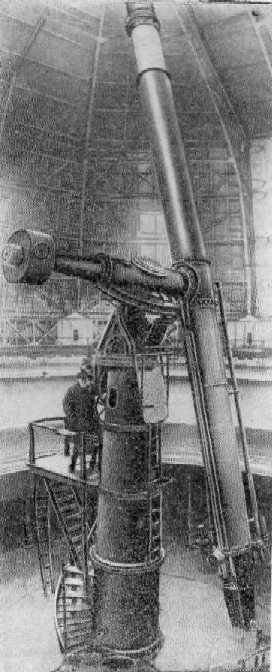 In 1896, Belopolsky returned to his native Moscow University in order to defend his doctoral dissertation on the subject of the study of Cepheids. In defense, he suggested that the change in the speed of a star that he had discovered was due to the dual nature of Cepheids, namely, the attraction of an invisible satellite orbiting the main body. The outstanding Russian physicist, Professor Nikolai Umov, who is one of his opponents, noted that the open phenomenon can also be explained by periodic contractions and expansions of the star itself, its peculiar pulsations. Many years later, the correctness of Umov's assumption was established. By the way, Aristarkh Apollonovich never overestimated the fruits of his works, rather he underestimated them. He always attached primary importance only to his own observations, and not to those cited in the literature. He loved to repeat: "We, the laborer in astronomy, have no time to follow the works of others."
In 1896, Belopolsky returned to his native Moscow University in order to defend his doctoral dissertation on the subject of the study of Cepheids. In defense, he suggested that the change in the speed of a star that he had discovered was due to the dual nature of Cepheids, namely, the attraction of an invisible satellite orbiting the main body. The outstanding Russian physicist, Professor Nikolai Umov, who is one of his opponents, noted that the open phenomenon can also be explained by periodic contractions and expansions of the star itself, its peculiar pulsations. Many years later, the correctness of Umov's assumption was established. By the way, Aristarkh Apollonovich never overestimated the fruits of his works, rather he underestimated them. He always attached primary importance only to his own observations, and not to those cited in the literature. He loved to repeat: "We, the laborer in astronomy, have no time to follow the works of others."The power of his method Belopolsky demonstrated in 1895 year, defining the rotation of Saturn and the rings of this planet. With ordinary telescopic observations, it was impossible to prove the assumption among astronomers that the rings of Saturn are not rigid. Aristarkh Apollonovich's method confirmed that the rings of the planet revolve around it at a speed decreasing with distance from the center, just as if they were a close collection of free particles. It should be noted that simultaneously with Belopolsky, Frenchman Henri Delandre obtained similar results, using much better instruments. Belopolsky conducted all the research on the 10-inch (25,4 cm) telescope, while Delandre had the same lens diameter as 120, see. A year later, Aristarch Apollonovich set the rotation period for Jupiter in a similar way. Much later, in 1911, the Russian astronomer tried to solve a long-standing riddle about the time of rotation of the planet Venus. However, he did not succeed in doing this to the full extent; the displacements of the lines in the spectrum of Venus were at the limit of the sensitivity of his method.
It is worth noting that the first spectrophotographic works of Belopolsky at the Pulkovo Observatory were carried out with very modest means. Scientists had to independently design most of the tools or improve existing ones. Throughout his life, he had an amazing gift of creating original and valuable scientific instruments from pieces of metal and wood. This was especially important when organizing new research, when it was impossible to immediately make a suitable device even in specialized overseas workshops. During the installation and trial tests of new apparatuses, Aristarkh Apollonovich easily mastered their design, noted the shortcomings for selected works. As a rule, after the first tests he introduced some small corrections to the instruments, which significantly improved the work and ensured the achievement of results that could not be obtained earlier. According to the astronomer, the work of this kind replaced him with a real rest. Just a year before his death, the already blind Aristarkh Apollonovich assembled a tiny model of the Foucault pendulum, which was then kept in the local museum.
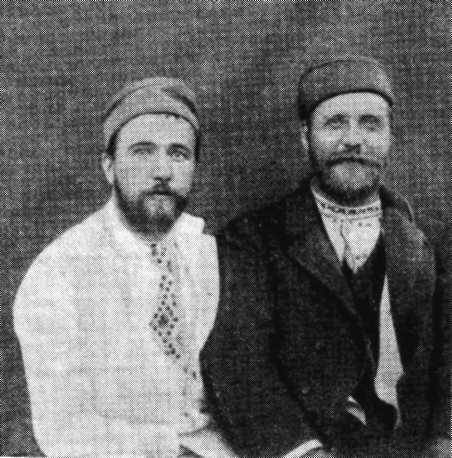
AA Belopolsky in 1896 on Amur on the day of sol. ". of a non-eclipse (left - A. R. Orbinsky)
In 1905, in connection with the creation of an international union for the study of solar phenomena, Belopolsky again aroused interest in the sun. He took an active part in the work of international conferences in Oxford, in Paris, in the American observatory on Mount Valet, acting as a representative of the Russian branch of the union. In 1906, he used a stellar spectrograph to try to establish the speed of rotation of the sun. However, very soon he had to admit that a special tool was needed for this purpose. As a result, Aristarkh Apollonovich constructed a unique solar spectrograph based on a tower-type telescope. After that, he organized observations of different points on the surface of the Sun to determine the rotation of the star, the study of the spectrum of sunspots and the establishment of their temperature. He repeatedly observed solar eclipses: in the year already mentioned 1887, in 1896 - during an expedition organized by an astronomer to Amur, and in 1907 in Turkestan. In 1896, Belopolsky managed to get excellent images of the spectrum of the solar corona and for the first time set its rotation.
Aristarkh Apollonovich successfully applied his favorite spectroscopic method to the most diverse space bodies - spiral nebulae, comets, even interstellar space. The Russian scientist was one of the first to study the spectra of cometary tails in order to determine their composition. At the same time, for comparison, Belopolsky conducted a number of laboratory studies of the spectra of carbon compounds.
In 1912, the 40-inch reflector, 32-inch photographic refractor and towers for the installation of tools were ordered from the English company Grabbe at the expense of the Russian Academy of Sciences. Unfortunately, the outbreak of war delayed the construction of these gigantic appliances. When relations with England were renewed in 1921, it turned out that additional funds were required to complete the work. Thanks to the intervention of Leonid Krasin, the necessary amount was released, and at the end of 1923, Aristarkh Apollonovich went to England to take over the equipment. Installation, adjustment and finishing of devices in difficult years for the country demanded from the scientist all his strength. He had to conduct extensive correspondence with foreign companies regarding the manufacture of a number of additional instruments, in particular a lens for a reflector, which was never made by the British. However, Aristarkh Apollonovich successfully overcame all difficulties and in a timely manner organized a number of extremely important studies of the ionization of the upper layers of the solar atmosphere and the electromagnetic field of sunspots.
Despite the years, the scientific activity of Belopolsky not only did not decrease, but, on the contrary, increased more and more. In addition to his research activities, the astronomer lectured at Moscow University, taught astrospectroscopy at the Higher Women's Courses in the Northern Capital - a similar course in our country was taught only in this institution. Very popular were the lectures of Belopolsky to the general public, not to mention his famous excursions conducted by scientists in Pulkovo itself. In addition, he participated in the work of the Moscow Mathematical Society, the Russian Astronomical Society, the All-Russian Association of Astronomers, the Italian Society of Spectroscopists, the Royal Astronomical Society of London, and several others. Belopolsky was also a member of many commissions dealing with applied issues, for example, the commission for measuring degrees in the polar archipelago of Spitsbergen, the commission for the study of the upper atmosphere of the Earth, etc. In 1908, he was elected vice-director of the Pulkovo Observatory, and in 1916 he was appointed director. However, his administrative duties did not correspond to his character as a scientist, and in 1919, during the next election, he withdrew his candidacy.
Belopolsky constantly corresponded with many famous astronomers. In 1932, the popular American spectroscopist, William Campbell, wrote to him: "How nice that your age (77 years) has not diminished the zeal for new research and does not prevent you from getting so many valuable results." The scientific discoveries of the scientist were repeatedly marked by signs of recognition - Belopolsky had three medals and three honorary foreign titles. It is known that he refused awards in favor of more young scientists, saying that he already considers himself a wealthy person.
As one of the editors of the Astrophysical Journal, Aristarkh Apollonovich was involved in editing translations of scientific articles, as well as independently with his inherent originality and thoroughness, translated into Russian the three well-known books on astronomy abroad, making their own additions to them. In total, for his 57-year work, he wrote about two hundred scientific articles, differing in a detailed description of the methods and tools used, the course of observations. He also co-authored the first Russian-language course in astrophysics.
Belopolsky had to travel a lot in his native country, he had repeatedly been abroad (in general, eleven times). His task was to order new instruments, to participate in international conferences, to meet with foreign observatories. It is curious that in all his life an astronomer has never used vacations. He said that new impressions and a change of place during scientific missions served him as a rest. Being abroad Aristarkh Apollonovich always remained a patriot of his country. He could not calmly listen to foreigners who were wrong or spoke ill of Russia. During a trip to America, a scientist wrote in his diary: “... I can’t allow the spread of wild gossip about Russia, which are transmitted here as reliable. My vehement objections to this issue are not taken into account ... ".
At home after a busy day, Aristarkh Apollonovich preferred to walk in the observatory park. Being already in old age, he often took a shovel and went to cultivate his favorite garden. A seventy-year-old unassisted scientist performed physically very difficult studies on a large refractor and on a seven-meter spectrograph. At a certain position of the stars, the astronomer had to make observations of lying (in winter - on frost-covered) the floor or balancing on the terrace of the tower of the refractor, risking to fall down.
By the end of his life, Belopolsky was completely blind in one eye and partly in the other, but he continued his research - the interests of astronomical science were above all for him. The tireless and unbecoming, he began to pay more attention to the training of his students, many of whom in the future became brilliant astrophysicists and gained worldwide fame. Also, until the very last days of his life, he independently performed all the calculations. The great astronomer 16 died on May 1934 of the year, just before his eightieth birthday.
Aristarkh Apollonovich Belopolsky was a man of big heart and big mind, a real scientist in the best sense of the word. Colleagues noted that he was a great companion, cheerful, witty, erudite. One of the scientists who worked with him at the Pulkovo Observatory described it in such a way: “Blond is of medium height with a friendly, open face. Always benevolent, highly modest, simple, delicate, extremely efficient, deeply educated. ”
During the First World War and the Civil War, in the subsequent years of hunger, Aristarkh Apollonovich remained a good friend and good friend, a sensitive and sensitive person who performs noble deeds not for the sake of advertising, but at the behest of the heart. Despite the many inconveniences of everyday life, he, as before, spent the nights all the time at the instruments, by personal example helping to maintain the spirit of his comrades and colleagues. Belopolsky said that in science there can be no stops, science should always develop, move forward. The scientist rejoiced when he obtained the coincidence of the theory with observations, but he loved even more the inconsistencies and contradictions, because, in his opinion, this was what gave a new impetus to development. His favorite saying was: "Coincided - well, not coincided - interesting." The results of the work of the Pulkovo Observatory were summed up at New Year's meetings, at which Aristarkh Apollonovich always spoke with a brief but bright word. He read out a small poem of a famous poet, and then, on the basis of poems, uttered his speech - life-affirming and full of faith in the triumph of the human mind.
Based on the materials of the books: “People of Russian science: Essays on outstanding figures of natural science and technology” edited by S.I. Vavilova; "Russian astronomical calendar" edited by the Nizhny Novgorod circle of lovers of physics and astronomy.
Information